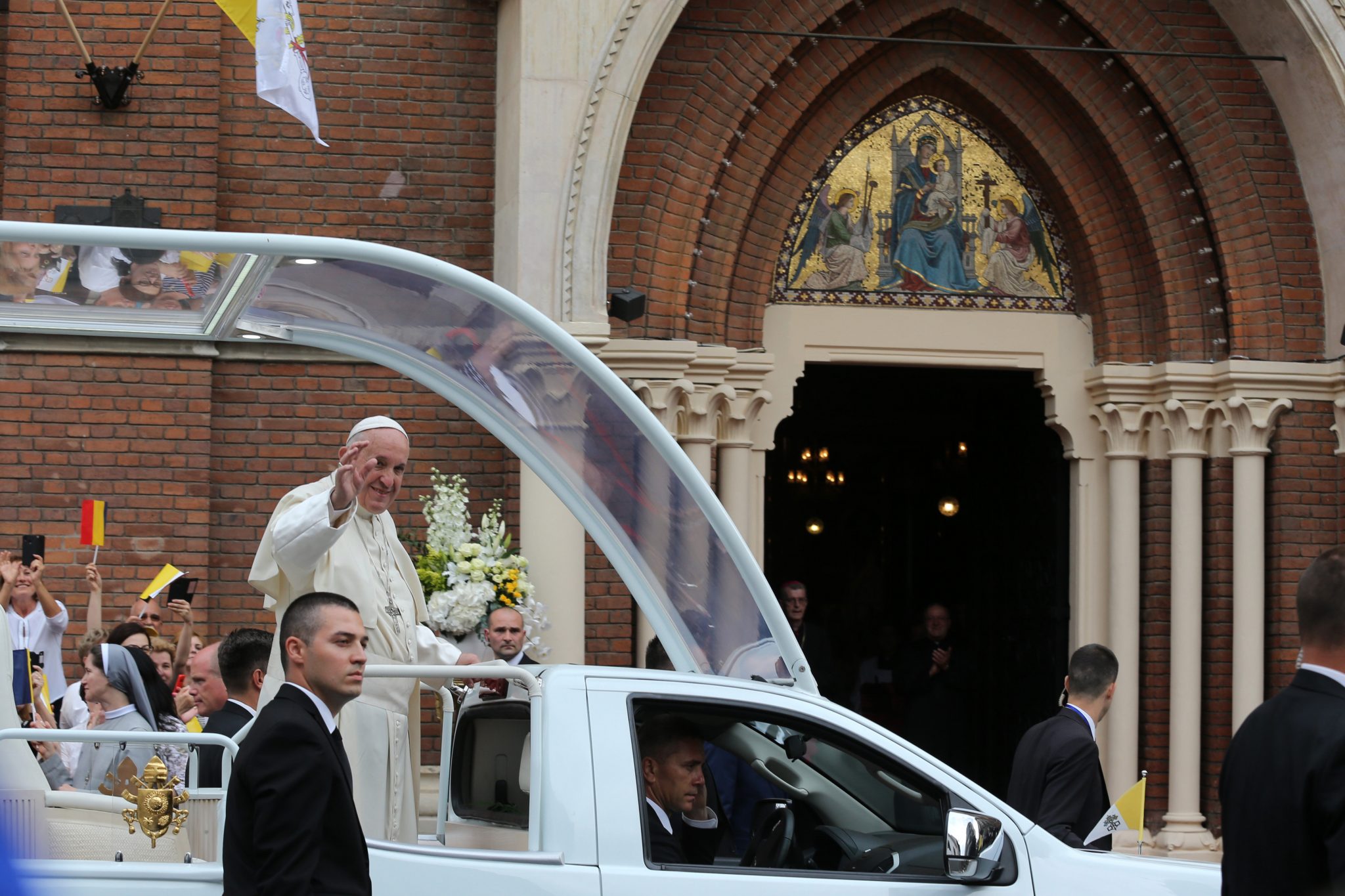
A critical point during the visit will be the pontiff's journey in the Popemobile, which is when he will be the closest to visitors of the event, Hajdu said.Continue reading
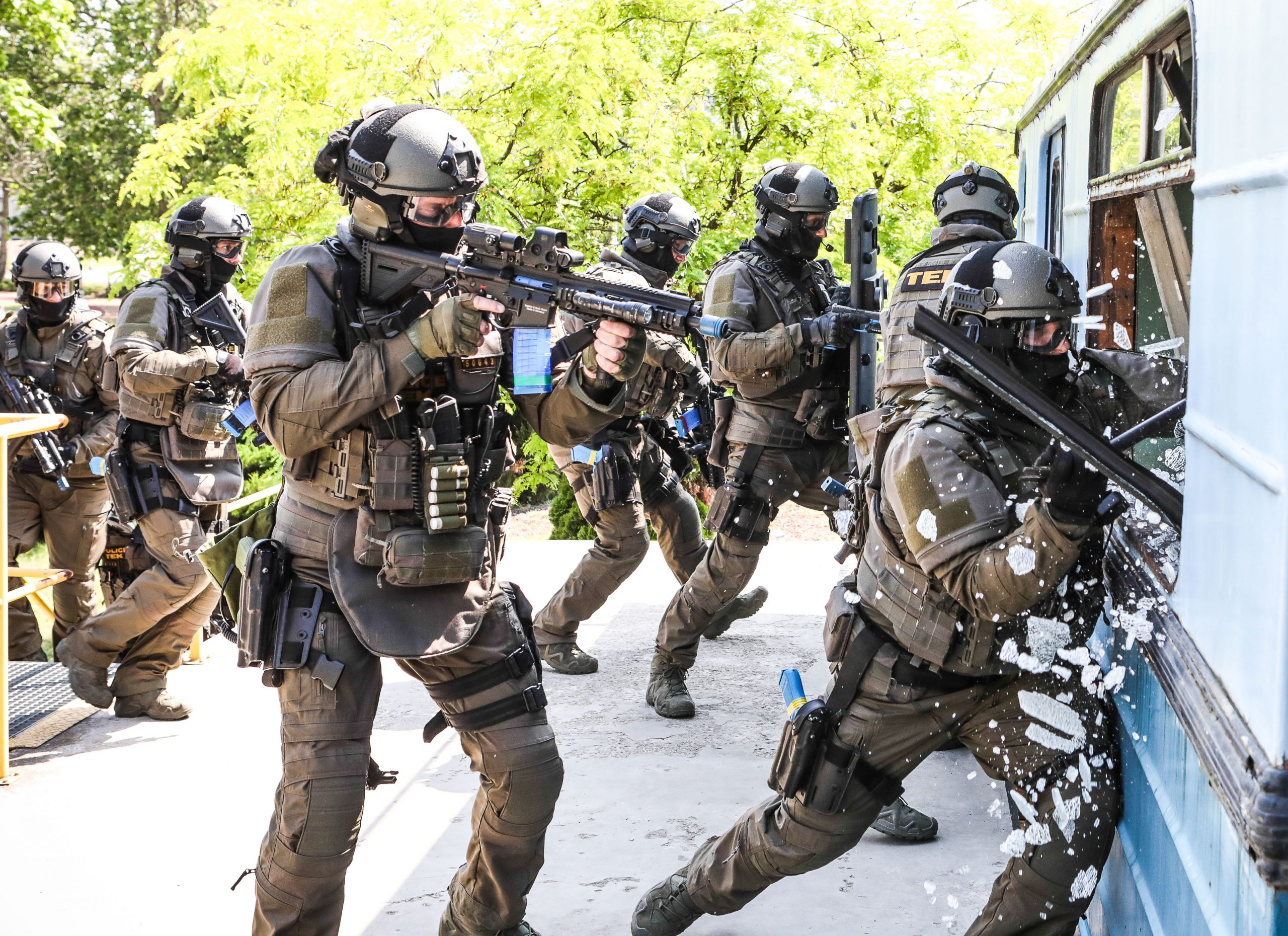
How is the Counter Terrorism Center (TEK) preparing to protect the Pope? How did the visits of Pope Francis and Pope John Paul II differ? Who was the man who fell asleep in Parliament and no one dared to wake him? We talked about all this and much more with Nándor Jasenszky, head of TEK’s Public Relations Department. Interview.
The scope of the Counter Terrorism Center is not a secret, but as a layperson, it can be difficult to imagine how the colleagues at TEK are prepared for the missions they are called on to undertake. Can you tell us about it?
The concept of “TEK colleagues” is an umbrella term. There are several branches of service, and each has a different role to play. Most of the time, there is an interest in what is colloquially known as ‘commandos,’ and how they are prepared for the work they do. But in reality, the Centre is made up of four professional directorates: the Intelligence Directorate, the Personal Protection Directorate, the Operations Directorate (commandos) and the Duty and Facility Protection Directorate, since their tasks are also an integral part of the core activity.
Their work is interlinked, closely interconnected, and mutually supportive, but each has a different job, so the training is different. Most of the staff we employ have a police background. So, they have spent time in different areas of expertise in the police, some in the defense forces. Then there was a selection phase and a training/preparation phase, and then became employed by the Counter Terrorism Center.
So, the people who come here already have previous experience, initial preparation regarding the duties of the service happens when they join the Center and go through the various training processes. It is quite a specific job. Not just physically, but mentally as well let alone the possible use of a weapon or a shot dealing mortal wound. That is why we have a staff of psychologists working within the TEK in two main areas.
On the one hand, there are work psychologists who deal with the workforce. They deal with the aptitude test at the recruitment stage with various tests. This has now become a serious science.
On the other hand, there are also those in a ‘field group,’ who accompany the operational units in case of an alert. They may be dealing with situations such as a hostage situation or isolation, they may encounter a person who is deranged, and they may have to save them from harming themselves or others. Colloquially, they are called negotiators.
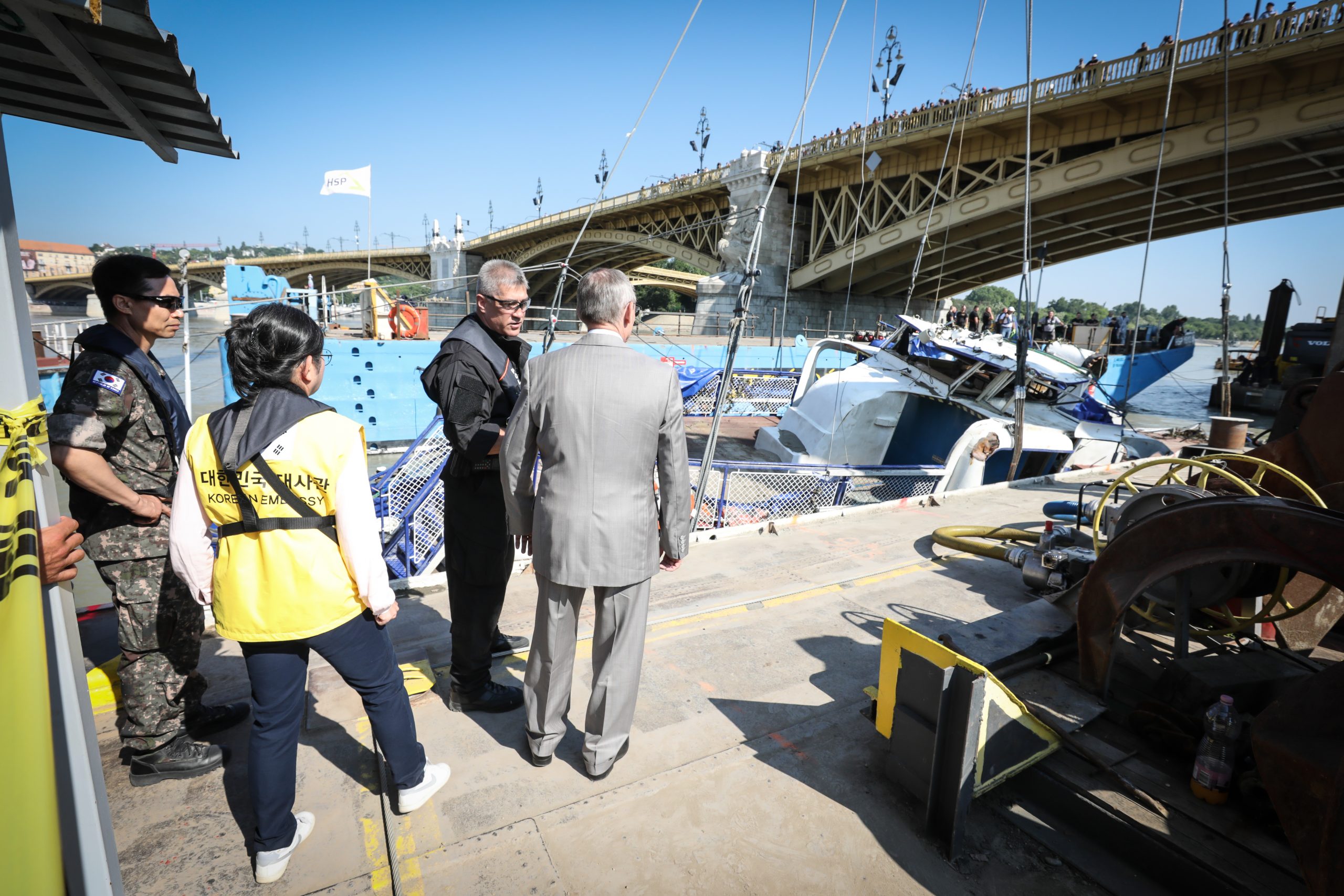
Hableány cruise ship disaster rescue. Photo via the Hungarian Counter Terrorism Centre (TEK)
I was asked at the time about the Hableány cruise ship disaster rescue, how can one prepare for these kinds of tragedies. You cannot prepare for these. But preparedness can be improved, provided that training is continuous. Back then I already said that it is by no means easy, but in our daily work there is an “it can happen.” It can happen, for example, that a weapon has to be used, that there is an injury or that someone dies, either on the perpetrator’s side or on the side of our colleagues. We put conscious work in these “it could happen” scenarios, which puts a tragedy on a different footing, but unfortunately, the tragedy itself remains.
So, within the ‘field group,’ there are people who will negotiate if that is what is needed?
In addition to the operations units (commandos), other capabilities are also present in the operation unit. For example, each unit has a K9 expert, a sniper, medical support, and a negotiator. Always adapted to the specific situation. Representatives of different professional fields – just like the negotiators –are not necessarily an integral part of the ‘field group,’ but belong to a separate department, but they go to these locations together.
Are these negotiations to be imagined like the ones we see in the movies?
It is about showing up on the scene and making contact with the other party. Life will dictate how, and through what devices this is possible. If it is a longer process, and in a real hostage situation it is usually a longer process, then such a conversation can become quite intimate, strange as it may sound, a kind of relationship between the two parties is established. It is no coincidence that it is never the negotiator who makes the decisions so that he or she is not inadvertently influenced by how the communication is going.
However skilled the members of the force may be, without other Hungarian information, police, or intelligence sources, TEK will find it difficult to carry out its mission effectively. To what extent is this communication channel systematically developed in Hungary and with international partners?
What must be seen in this work is that it can only be successful if it is backed up by proper international cooperation and networking.
An example of the shortcomings of this, the divisions and communication breakdowns within the internal bodies was 9/11, which was examined at length by colleagues there, and a great deal of action was taken in the United States afterward. Organizations were set up, a different cooperation structure was established. Not only 9/11, but also the subsequent events in Europe in 2015, the terrorist attacks in France and Brussels, and the investigation of all terrorist acts that have been committed, the communication between the agencies is important, because in every case we have to investigate whether something has changed, what is the new method of perpetration, who we are dealing with. In order for reconnaissance to be effective, and even more importantly, prevention to be more effective, these must be constantly analyzed and incorporated into everyday work. This only works if there is an active, intensive, and extensive police partnership.
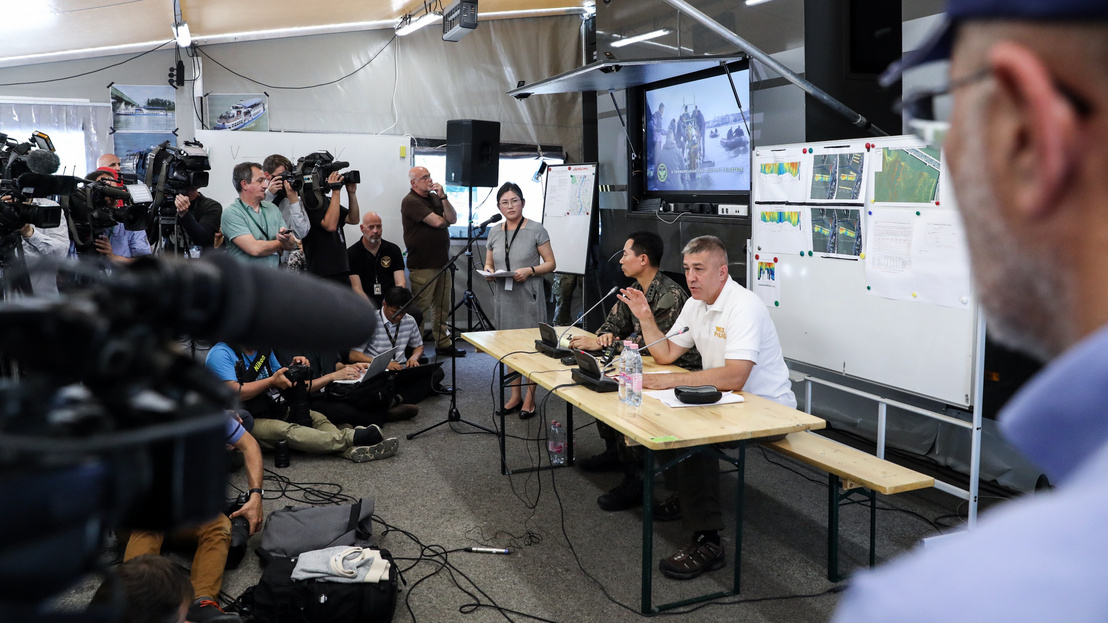
János Hajdu, Director General of TEK speaking at the time of the Hableány cruise ship disaster rescue. Photo via the Hungarian Counter Terrorism Center (TEK)
It is a continuous development and improvement, and thank God it has gotten to the point recently where it is working to the hour or to the minute. We are talking about online, machine-to-machine connections, automatisms. There are systems in place in Europe and in other parts of the world that are constantly monitoring phenomena identified by analyses of the behavior of past perpetrators. For example, phenomena that might typically be associated with preparation. Among these indications, counter-terrorism organizations need to communicate with each other to find out whose job is what.
Because there are visible phenomena. For example, migration from specific areas toward Europe. You can see which directions are being used. On these routes, in these areas, on the external and internal routes, in the different stations, everyone has their own task that is needed, adding up to the shared work, with the help of which “you can see the whole structure.”
My next question is exactly about prevention. What we see in the news, or even in films, of foreign organizations similar to TEK is that they arrive on the scene when the trouble has already happened. However, TEK is also responsible for preventing terrorist acts and other related crimes. What are the conditions – besides the previously mentioned network of contacts – for achieving the fastest possible response?
On the one hand, it is the network of contacts, and on the other hand, it is the seriousness and conscientiousness with which all information must to be examined.
There is not much room here for saying “we do not think this is that important.” You never know. 9/11 was a shocking event, and I said to one of my colleagues at the time: “Tell me honestly, if we had received a piece of information a month ago that a Cessna was going to fly into the Semmelweis building in Nagyvárad Square in Budapest, how soon would we have thrown it to the bin?”
Because at that time there had not been any use of airplanes as weapons, I note, not since the Second World War, because the Japanese had already done this, but not since then. So, terrorism, as we knew it up to that time, did not have a precedent for using aircraft as a weapon. They used to hijack them and make demands. There, the aircraft was a mere tool, but now it has become a weapon. That is why it is not so easy to disregard pieces of information and say, “Oh, well, that cannot happen, we are not going to get that far.” Yes, it can.
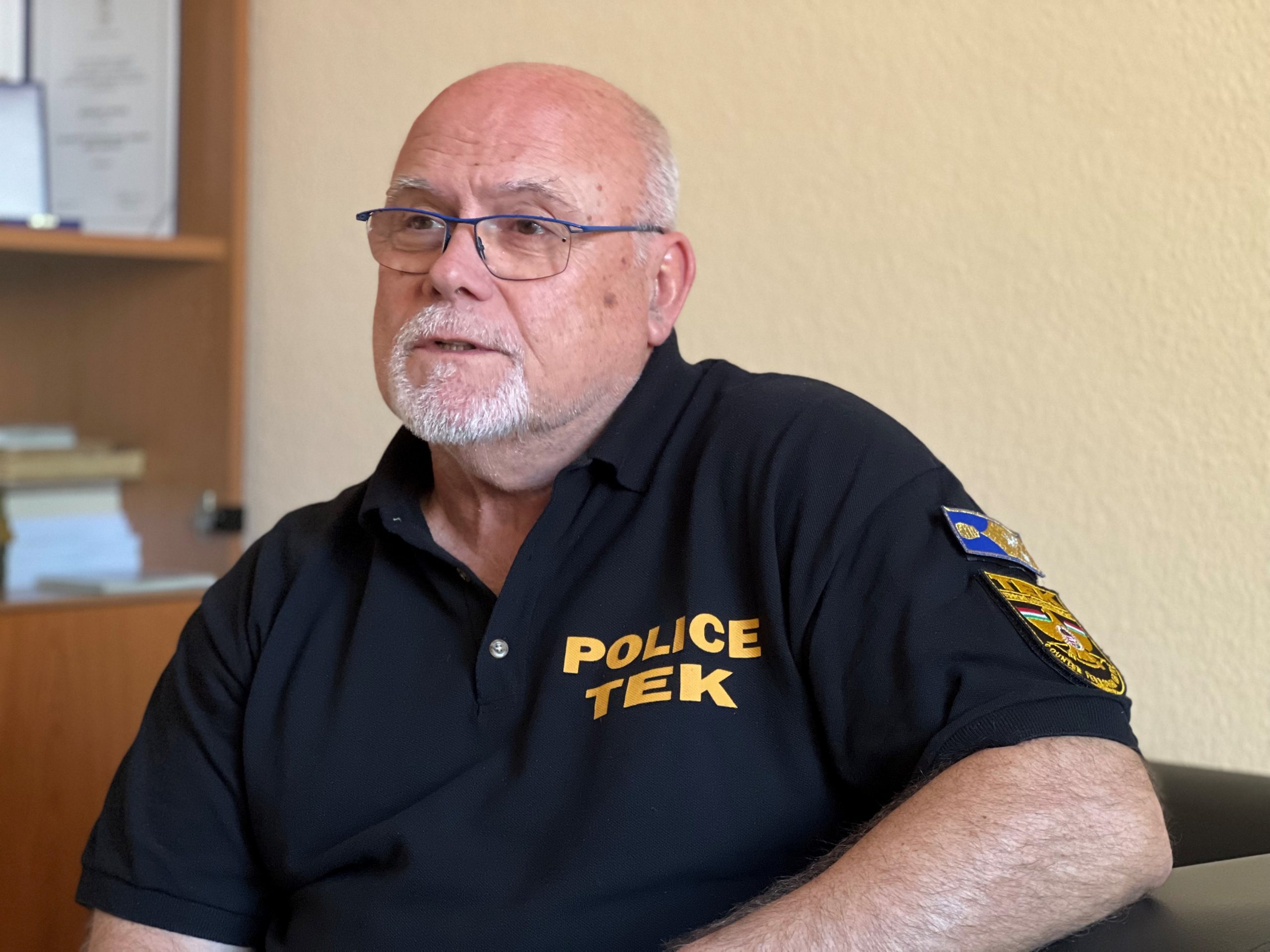
Nándor Jasenszky, head of TEK’s Public Relations Department. Photo via the Hungarian Counter Terrorism Center (TEK)
How the organizations work together is very important. Some may have a mosaic piece. Fragments of information are terribly important. It is an illusion at the moment that these would automatically go through various IT systems with the help of artificial intelligence and at the end roll out as wooden balls (like in the movie Minority Report) and we can say, “He is the one.” We do not even know if it has to be wooden balls. What we do know is that the pieces of the mosaic still need to be dealt with by humans. There is still a lot of information managed by humans, there is human thinking, and there is human cooperation.
Cooperation, therefore, is important – this is one of the main directions that general János Hajdu, the Director General of TEK is committed to pursue – to build and link close relationships internationally and with neighboring countries. This does not mean that we meet twice a year, we are happy to see each other and that we are still in the same position and rank. No. This is about ensuring that if something were to happen and we need to work together, we literally speak the same language, think the same way about the same thing, and create various legal and other conditions for this.
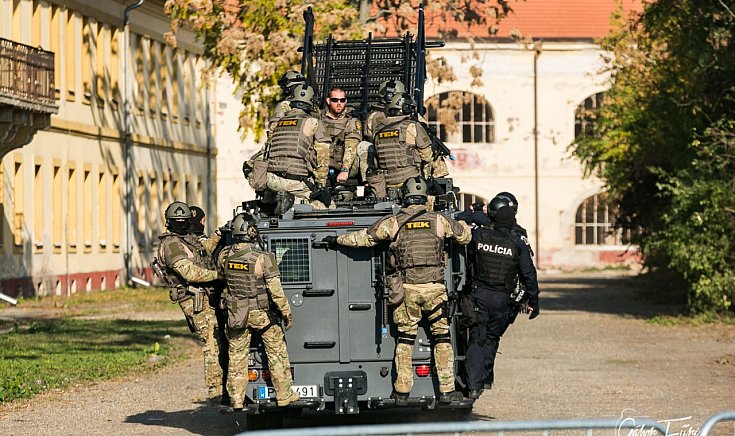
Photo via the Hungarian Counter Terrorism Center (TEK)
A few years ago, there was an exercise that was very expressive in this respect. In the imaginary situation, there was a hostage situation on a hotel ship in Vienna, which was initially handled by the Austrian partner service, Cobra. But that ship was going down the Danube. Hardly before we even started the interventions, the job was in Slovakia, and they were already past Bratislava. And it took about the same amount of time for them to get to the Hungarian section. A normal execution time of a hostage situation like this is optimally five-six. Within those five-six hours, the case went through three countries. The three organizations have to be able to work together, because what one has started, the other has to be able to continue or take over. So, this will involve the Slovakian Lynx Commando, and it will involve TEK at the end.
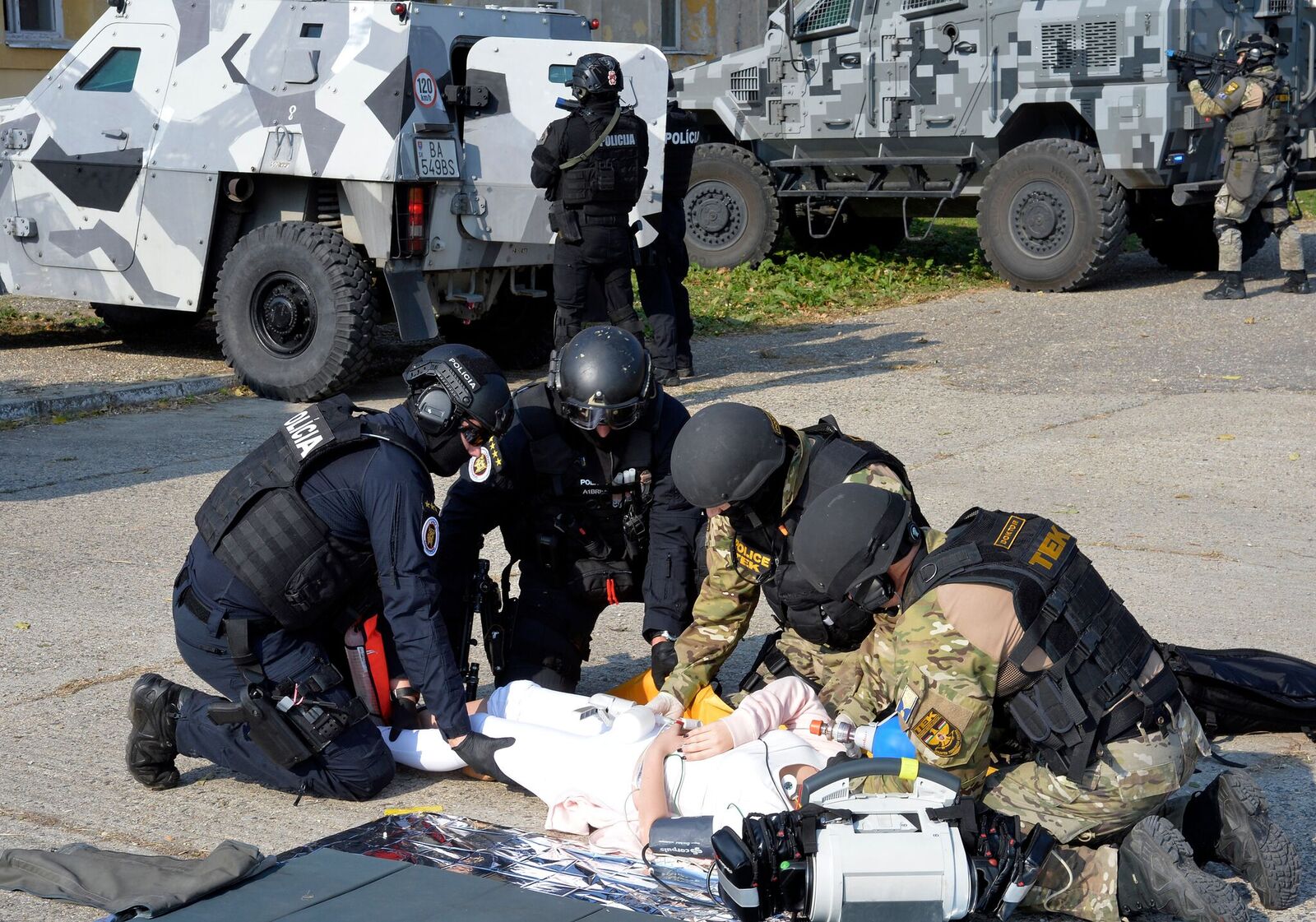
Photo via the Hungarian Counter Terrorism Center (TEK)
One of the keys to such scenarios is the ATLAS Network, an organization of European counter-terrorism units with 27 members. In ATLAS, the different areas of expertise are divided up, and it is up to the country with the greatest expertise to train the others. In the field of maritime rescue, the Scandinavian countries are the most skilled, the German GSG9 are the aircraft experts, and we have integrated the tactical medicine, the TEK-Medic system, into the joint system, and Hungary is responsible for it. In 2019, ATLAS and TEK, with the support of the European Commission, launched Europe’s first independent tactical medicine training center. Since then, the Center of Excellence has been responsible for running international courses. In our country, no unit is deployed without a doctor or paramedic.
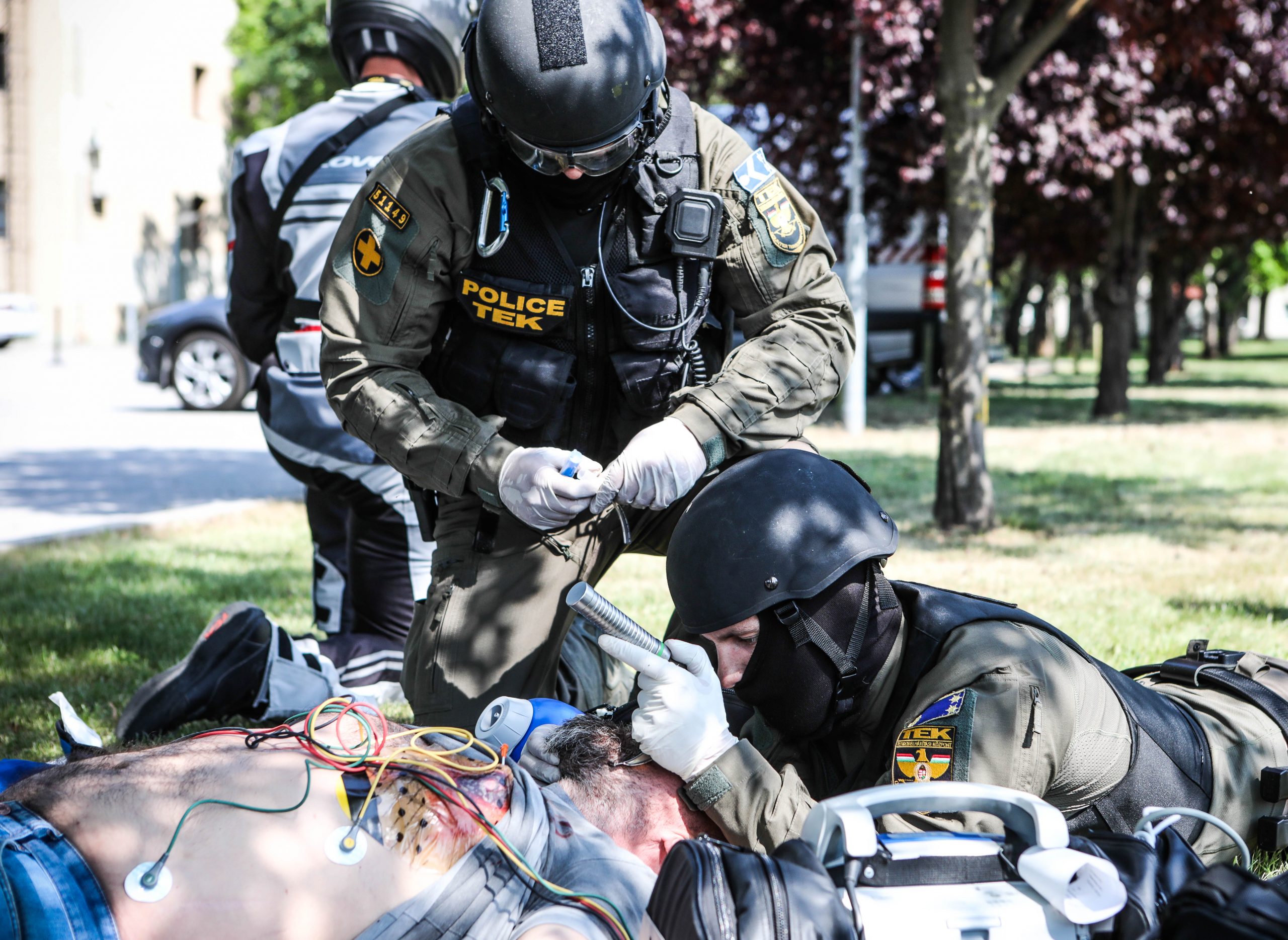
At the International Eucharistic Congress in Budapest last year, the role of TEK was to protect the Pope. How do you prepare for the arrival of such a person?
The law determines the Counter Terrorism Centre the protection of the Prime Minister, the President of the Republic, the Prosecutor General, and the Minister of Foreign Affairs and Trade. This must be done 24 hours a day or on a regular basis, according to the appropriate order. This can be waived by the protected person in certain circumstances, but the point is that it is the task of TEK.
In addition, the protection of any leader or individual arriving to Hungary assigned by the Minister of Interior, on a case-by-case basis. Thus, if a leader or someone else from another country arrives and the Minister of Interior deems it necessary, then the Counter-Terrorism Center must also provide protection for them.
The Pope’s visit was in the same category.
It starts with a very long, meticulous consultation. We need to know how His Holiness and the Vatican are thinking. I am often asked if we are in consultation with the Swiss Guard.
TEK does not coordinate with the Swiss Guard, rather we should think of the Swiss Guard as the guard of the Vatican’s state facilities.
So, they only work there?
They work in that region. We did not work with the Swiss Guard, but with the specific units of Corps of Gendarmerie of Vatican City. What the program will be, what, how long it is planned for, where we are going, from where we are going, will be there countryside, if we stay in the capital, what movement will be there within, how much rest time is needed, and so on.
Emperor Haile Selassie, for example, fell asleep in Parliament and no one dared to wake up the Lion of Judah.
I suppose the program is also delayed at such times.
Yes, that drives the protocol personnel crazy.
The visit of the Pope was a special occasion for Director General János Hajdu, as he had also been involved in the security during the visit of Pope John Paul II, in the close protection tasks. He had walked with His Holiness John Paul II, and during the visit of Pope Francis to Hungary he was already present as commander of the same unit. This is not very common.
We walked around the sites with a different perspective during preparation, and we had a serious wave of nostalgia.
Pope Francis never left Heroes’ Square. But Pope John Paul II visited the entire country at the time. He celebrated mass in several rural towns, which was a completely different personal protection situation.
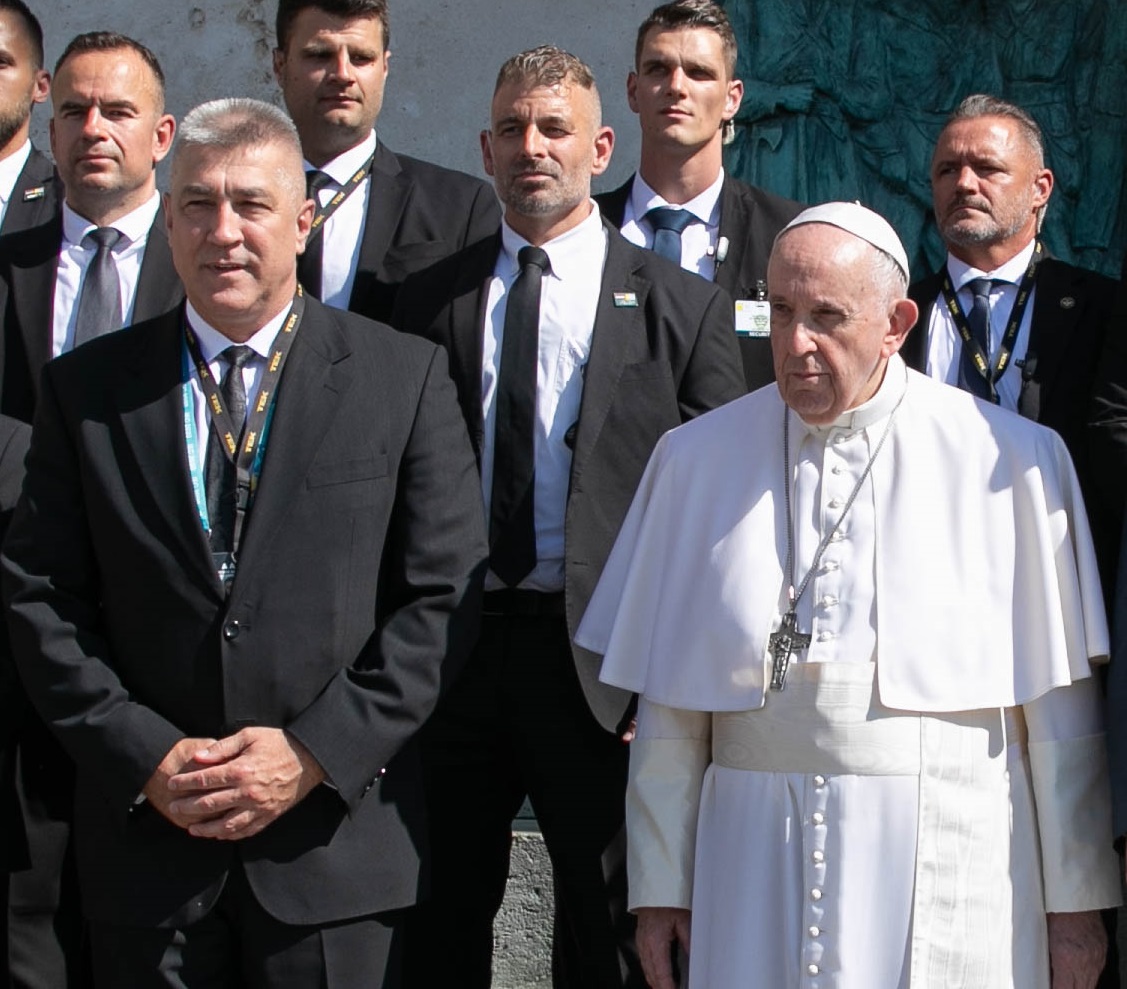
János Hajdu, Director General of TEK, and the Pope. Photo via the Hungarian Counter Terrorism Center (TEK)
How far in advance do you start working on designing this kind of protection?
It starts months in advance. There are some tasks one not involved in such work would not even think of. In this work, too, you have to be prepared for the “it can happen.” For example, a lorry breaks down on the route of the convoy. The execution of a possible technical rescue must be prepared, so that the road can be cleared afterwards, what other routes can be taken, how it can be bypassed, etc.
A lot of people think that it is enough to be able to look very serious, have short enough hair, and wear black sunglasses. Personal protection is much more than that.
In addition to safety, everything must run as smoothly as possible. The hardest thing is to ensure that no interests are ever harmed. When we see that the person leaves peacefully, in good health, and at the bottom of the stairs still thanks the people involved in the security for their cooperation is wonderful; this happened in the case of the Pope as well.
I can imagine what a relief that must be.
Of course, absolutely.
You can hear the weight being lifted off people’s shoulders. Although it is actually only over when he is out of the airspace, which means another twenty minutes or so of stressful atmosphere.
Many people know special police forces only for dealing with terrorist attacks or organized crime. But TEK must also pay attention to the consequences of the ongoing war in the neighborhood, such as illegal weapons trafficking or people smuggling. Could you elaborate on the matter?
The fact that there is a war in the neighborhood is definitely an influencing factor. It influences things because there is a relatively high daily influx of refugees, a different kind of refugee influx than from the south, but it can also impose on TEK control tasks and joint cooperation with the police. But there are professional organizations that have to deal with acts of war; therefore, that in itself is not our task.
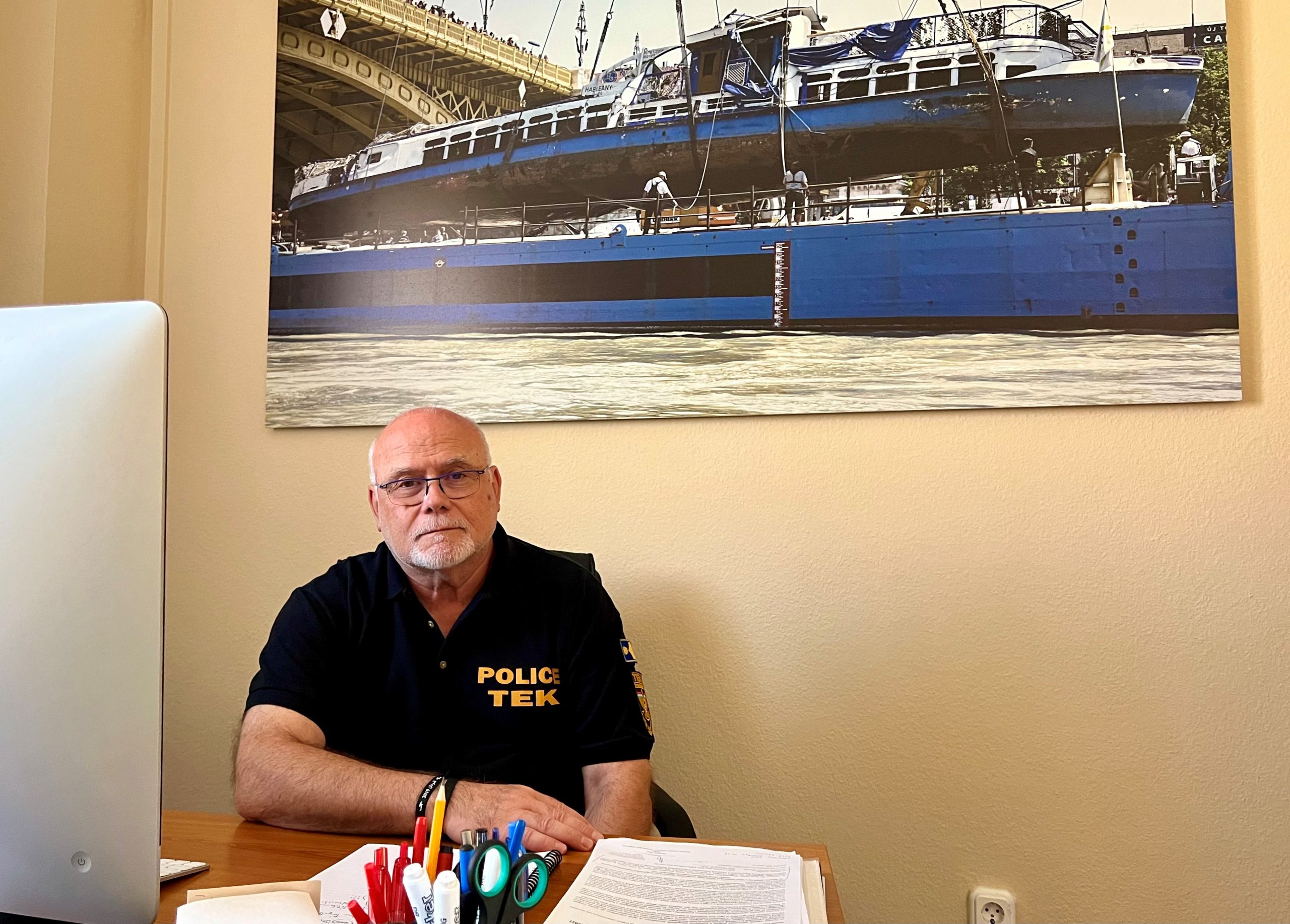
Nándor Jasenszky, head of TEK’s Public Relations Department. Photo via the Hungarian Counter Terrorism Center (TEK)
With regard to the human trafficking networks working on the southern border section and the people coming from there, it is very important to be able to filter out if people try to take advantage of this wave to enter our country (as happened before, in 2015, who joined later or they came in with the intention of joining terrorist cells in Western Europe and took part in the Paris attacks, for example).
This is a very difficult filter and research work. It is difficult because the smugglers are also organized. In cooperation with the services in Europe, in the South, we have to map this. There is quite a lot of action taken at the border every day. When the various groups crossing the border are checked or stopped, proceedings are initiated against their helpers and supporters, and during the proceedings their connection and the manner of connection to networks are investigated. For example, the person who was driving the car. That is, if you can find these facilitators.
The constant monitoring of these phenomena, comparing service information is what is added to the tasks of everyday life.
All photos were kindly provided by the Hungarian Counter Terrorism Center.